This guide explains the main ingredients necessary for facilitating a team start up and provides you with six example agendas. The guide includes questions to think about when you set up the facilitation and during the meeting.
The components needed for a team start up
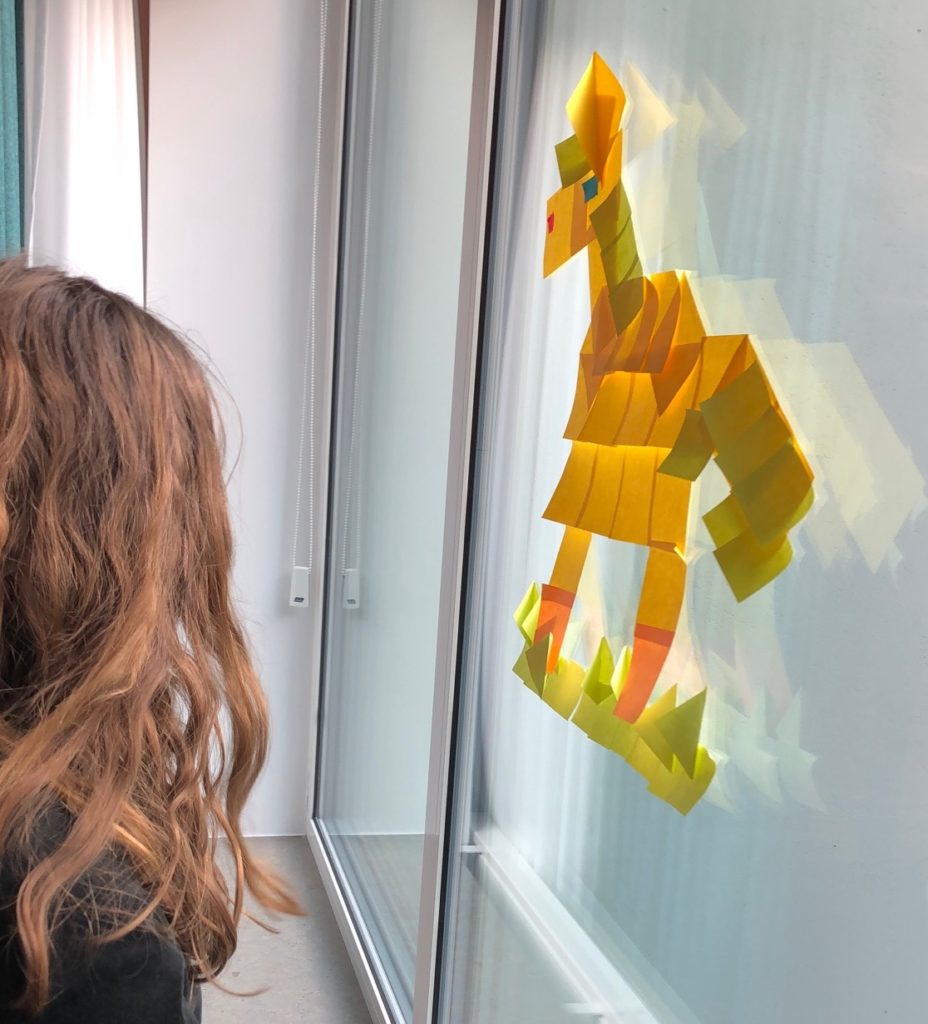
- Purpose or mission -> why does the team exist?
- What is the business value?
- What does success look like?
- Understanding who the team members are:
- Clearly defined membership list -> who is on the team?
- Make sure that people get to know each other -> who are my team members as people?
- What are people’s skill sets? What do they know now, what do they want to get better at?
- Agree to how to work together
- What do team members expect from each other
- What behaviors does the team want to have
- How to talk to each other?
- How to split up work?
- What meetings/sync/feedback is needed
Questions to consider for each area
Missions
A mission is a combination of why we want to do something and what it is that we’re doing to achieve it. I would recommend reading Stephen Bungay’s Art of Action.
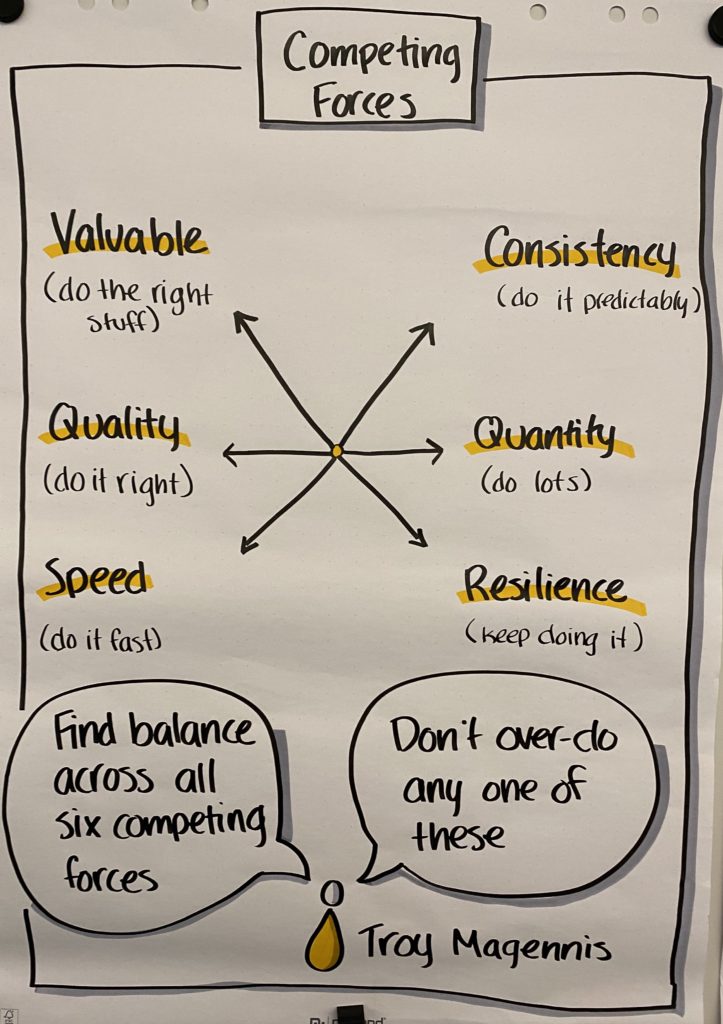
- What is the company’s mission?
- What are other teams doing to support that mission?
- What should our team do to support the higher mission?
- What should the team’s mission be
- How do we measure success?
- You can use OKR:s or any other metrics you would like. The important thing is to be clear. Also make sure to balance your metrics -> eg: Revenue > xyz && Customer support tickets < abc (I like to think of Troy Magennis’ balancing competing forces)
Constraints
- Do we have any constraints? Are they assumed or explicit?
- Do they stop us from achieving our goals?
- Constraints to consider:
- Budgetary? Hire, pay for equipment
- Technical? Platforms
- Decisions/authority?
- Prioritization? How prioritized is our work compared to other initiatives at the company.
How we work
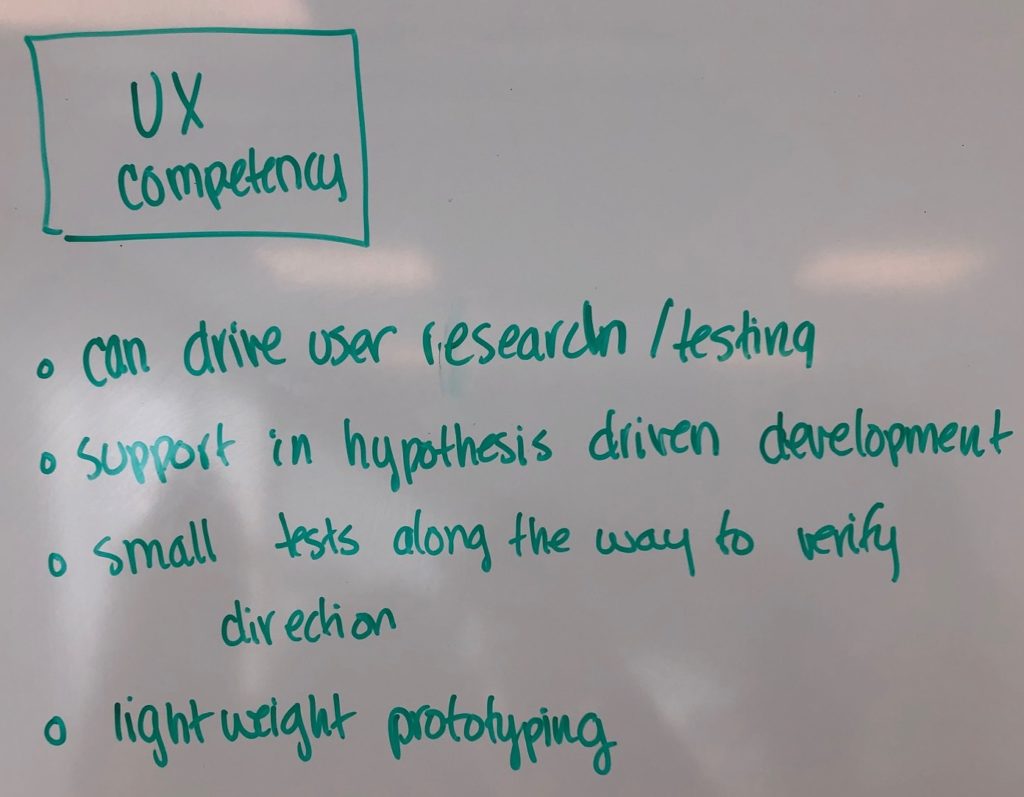
- What are our values?
- What are some examples that show that we are living these values?
- Are these values aligned with our mission?
- Working agreements?
- Make the implicit explicit
- Role expectations
- What are our expectations of each other?
- What kind of work do we need to do in this team -> how should we do it?
- Do we have the skills that we need?
- What does collaboration mean to us?
- When and how do we want to work together?
- What can be decided by an individual/smaller group, what should be discussed in the larger group?
- How do we want to handle conflict?
- What if I have a problem, how should I go about solving it? (Do we need an escalation policy, when should we use our escalation policy? What should we do when this isn’t a case for escalation?)
- Team health check -> checklist/schedule
- How do we onboard?
Team membership
- Who is on the team?
- What about team members who are shared?
- What about dependencies on external teams?
- How do we work with people who are just there sometimes?
Example agendas for a team startup
Now we’re ready to have a start up or restart meeting. Here are six skeleton facilitation guides to give you an idea of what you can do. Fill them out using the questions above depending on your team’s context. Each of these faciliations has been tested successfully with a real team.
Keep in mind:
- When you set up the workshop: get people moving, schedule frequent breaks, have fun/work activities interleaved, break up larger teams (>4 people) into smaller groups during the exercises and shuffle the groups throughout the meeting.
- Clearly explain the purpose of the meeting, what outcomes you expect and post an agenda.
- It’s a good idea to schedule a social activity with the whole team after the meeting.
Agenda #1 Restart ~1 day
A team that has been working together for a while, doing a restart
- Check in – getting to know you, pick your favorite character (movie characters cut out on the table), why did you pick this character?
- What have we done so far
- A vernissage with pictures from the demos and release plans and team activities over the past x months
- Individually walk around the room and look at the pictures. Use green and pink post-its to mark what felt good and what didn’t feel good.
- Debrief in a big group: What are you the most proud of? What parts were difficult and why
- Where are we going next? (Mission)
- Presentation of the company’s expectations
- How do those translate into expectations on this team, this was also a presentation
- What are the success criteria -> based on the strategy that the company has.
- How do you feel about this mission?
- What questions do we have that need to be answered for us to be able to succeed?
- Role expectations
- Team activity e.g. Post-it pixel art on a wall or window
- Split into smaller groups
- Time box to ~30 minutes
- Ask each group to find pixel art that they want to create as window or wall pixel art and let them create it.
- Debrief -> did you work like a team to perform this fun exercise? What do you need to think about when you work as a team?
- Check out -> What is your takeaway from today?
Agenda #2 Personal Connections – ½ day
For a team that has a defined mission and now needs to get to know each other better.
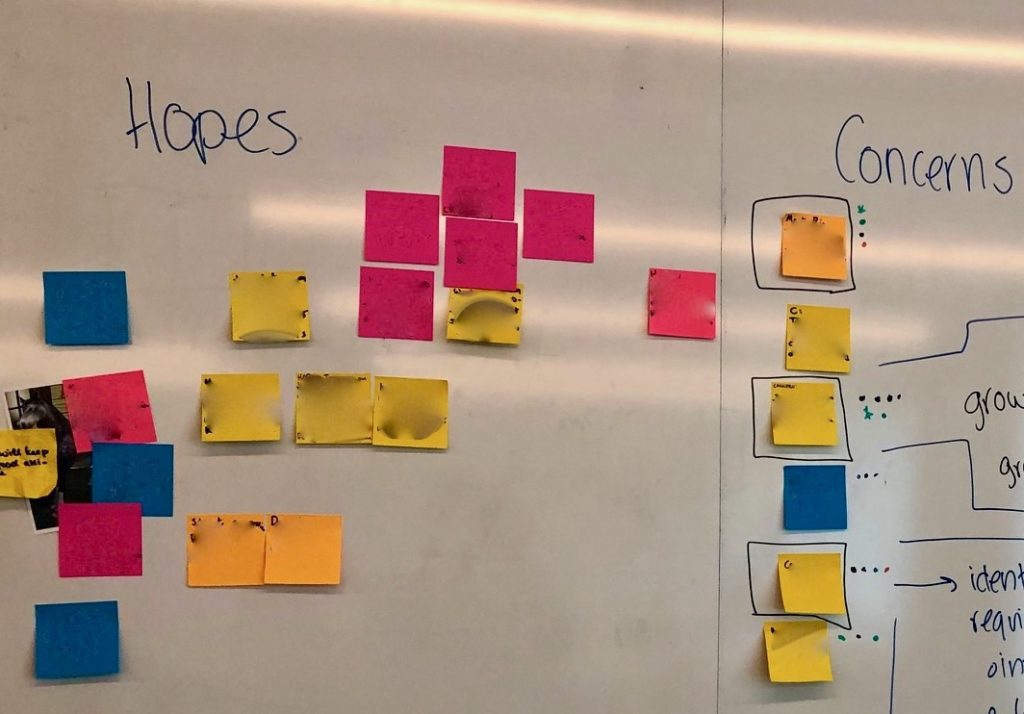
- Who are we?
- Ask each participant to create a Personal Map on a large paper
- Have each person show their paper and answer questions from the others (this is not a presentation, the person just answers questions that others pose)
- How do we work today?
- How do we work today? And what are our goals? For a small group ask the participants to shout out their answers, for a large group, have them write on post-it notes then present.
- How do we want to work together in the future?
- Ask people to write their hopes and concerns
- Group the hopes and concerns into areas
- Answer the question: How can we ensure that we get the benefit of the hopes, and what do we need to do to stave off the concerns
- This is a list of working agreements for the team
- Team Lunch/Dinner
Agenda #3 Focus on the Mission – 1 day
This meeting focuses on improving an existing mission, for a newly formed team.
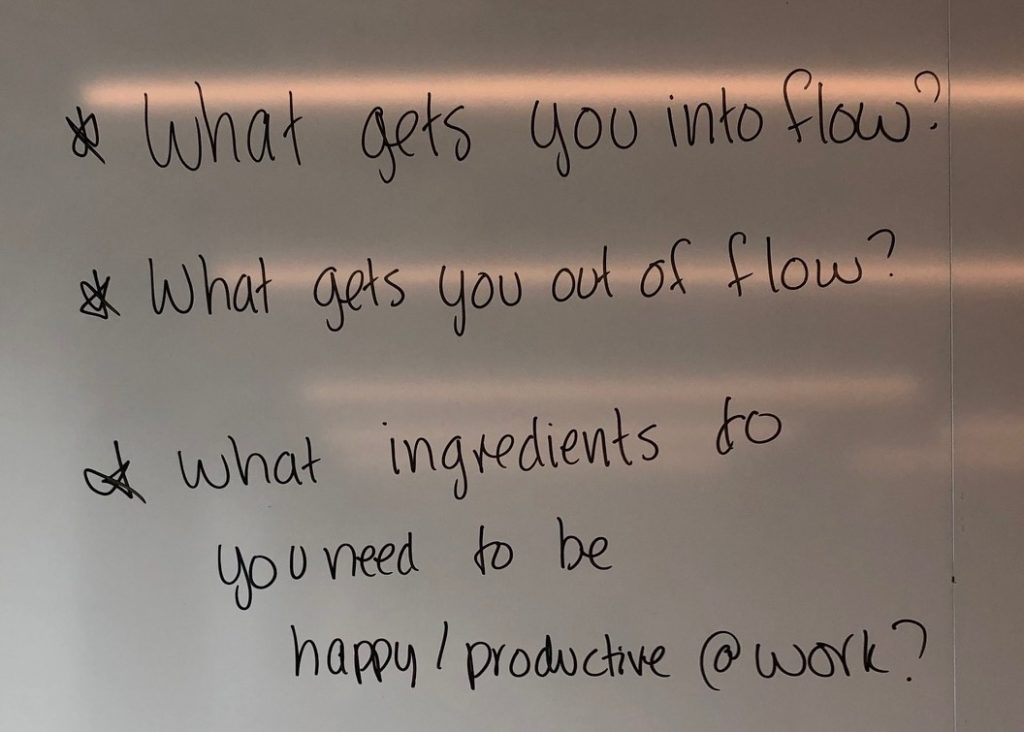
- Breakfast together
- Getting to know you
- This is the check in. Pictures related to the product that the team works on.
- Each person picks their “favorite”
- In the group each person explains why they chose their picture
- Who are we? Each person creates their own poster answering the following questions (Exercise credit: Andreas Tael)
- What gets you into flow
- What gets you out of flow
- What ingredients do you need to be happy/productive at work
- Share with at least one other person (ask the participants to hold on to their posters, and in each new group during the rest of the meeting, start out by having people share their personal poster)
- What is our mission
- Write up the mission on the board
- Split into smaller groups (share in flow/out of flow posters), what do you like, what would you like to improve
- Work together to clarify mission
- Team Lunch
- Hopes and concerns (these teams were all switching their way of working)
- In smaller groups discuss your hopes and concerns.
- Summarize to present to the larger group.
- Team building activity -> post it pixel art
- How do we want to work (given the hopes and concerns and definition of a team)
- In smaller groups: What action proposals do you have to help achieve the hopes and mitigate the concerns.
- Present to the larger group, and vote on the proposals -> these are actions points or ways of working
Agenda #4 Creating Clarity ½ day
For a new team that needs to clarify the work they need to do. (this is basically a future spective)
- It’s a year from now it’s an amazing day the release has gone well, we’re celebrating, describe the future (have celebratory props, that are appropriate for the time of year in this future)
- This becomes the basis for the team’s vision
- What did we do to get there?
- Ok back to the present -> what do we need to do to achieve our vision?
- What do we need to succeed?
- What are our open questions?
- Identify backlog items and action points -> Make sure to schedule follow up meetings to work with the backlog.
- Check out, how are you feeling about our future?
- Team Lunch
Agenda #5 Make the implicit explicit ½ day
A facilitation for a team with an existing mission
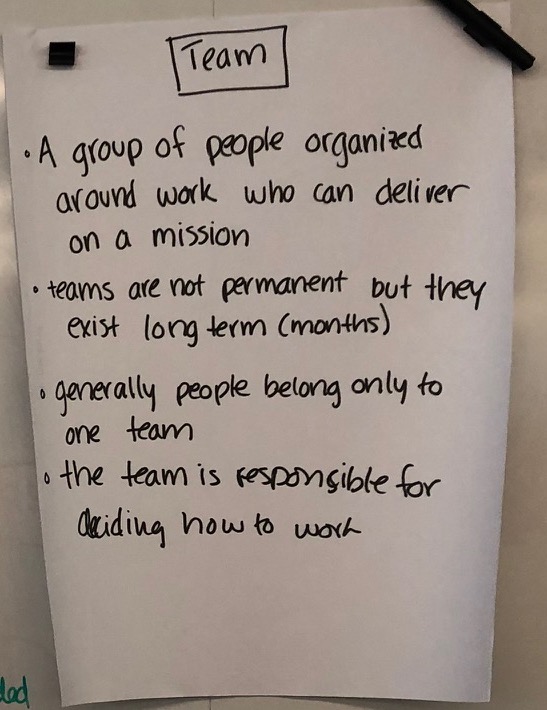
- What are your expectations from today’s meeting?
- Use as a check in question
- Note the answers
- Follow up during the day
- What is our mission?
- For a small team mob write changes to their mission together on a white board
- For a larger team, split the team into groups and have them come up with proposed changes. Put them up on the board and cherry pick the parts that should be included, to co write the mission.
- How do we want to work as a team?
- Write on post-it notes what elements the team needs for a successful team relationship. As a starting point use the definition of the team.
- How do we work as part of the company?
- Split into smaller groups, how do we ensure that we are aligned with the rest of the company?
- How do we ensure that our work is visible to others?
- Check out -> How do you feel about our mission now?
- Team Lunch or dinner
Agenda #6 First things first – 1 day
Facilitation for a team that doesn’t have a mission. Larger team of people ~10

- Breakfast together
- Check-in what are your expectations for today (follow up during the day to see if you’re meeting the expectations)
- Who are we ->
- Create Market of Skills (From Lyssa Adkin’s book Coaching Agile Teams) posters:
- What are my skills
- What would I like to learn/get better at
- Other interests
- Individuals present their posters and the rest of the team signs their name on the skills that they can help a person with.. Ask the rest of the team to also help fill in what the person didn’t identify as their own skills
- Create Market of Skills (From Lyssa Adkin’s book Coaching Agile Teams) posters:
- What is our mission?
- In smaller groups create proposals for what the mission could be.
- Each group shares their mission proposal -> write the mission proposals so they’re visible to everybody
- Each person votes on what they liked best (in some cases this was a sub part of the mission proposal)
- Discuss and put together one mission statement out of all the more relevant proposals. This also helps define what this team is not.
- Team Lunch
- How do we want to work together? What are our expectations on each other
- Start by sharing the definition of team. Ask people to write post it notes about what is most important for them for them to have a good team in place (e.g collective ownership of content)
- Vote on the top three topics and split into three groups.
- Each group discusses one of the topics and comes up with improvement proposals
- Rotate twice, so each group discusses each of the topics
- Create three new groups with the participants shuffled, so each new group had members from one of the old groups.
- The new group selects and combines proposals into 1 or 2 action points
- Each group presents the way forward for each area
- Do a quick thumb vote to see if anything was missed in the action points that were selected.
- Fun activity : tell a story (alternate drawing with writing, exercise credit John Almbecker)
- Split into groups of 5
- Each person has an A4
- Ask each person to draw: Someone doing something that leads to a result (2 minutes)
- Pass the papers clockwise, the next person writes a sentence describing the drawing (remember someone doing something that leads to a result) (1 minute)
- Fold the paper so the picture doesn’t show, pass the papers clockwise
- The next person draws a picture of the sentence (2 minutes)
- Fold the paper so the sentence doesn’t show
- The next person writes a sentence describing picture #2 (1 minute)
- Fold the paper so that the picture doesn’t show
- The last person draws a picture of sentence #2
- Pass the paper clockwise. It should now be back to the original person. Let each person show and tell what happened to their original story.
- What expectations of the day have we still not met -> resolve or schedule a separate meeting.
- Closing round of appreciations -> Give the participants a chance to thank each other for what they brought to the facilitation.
Adapting for distributed and remote teams
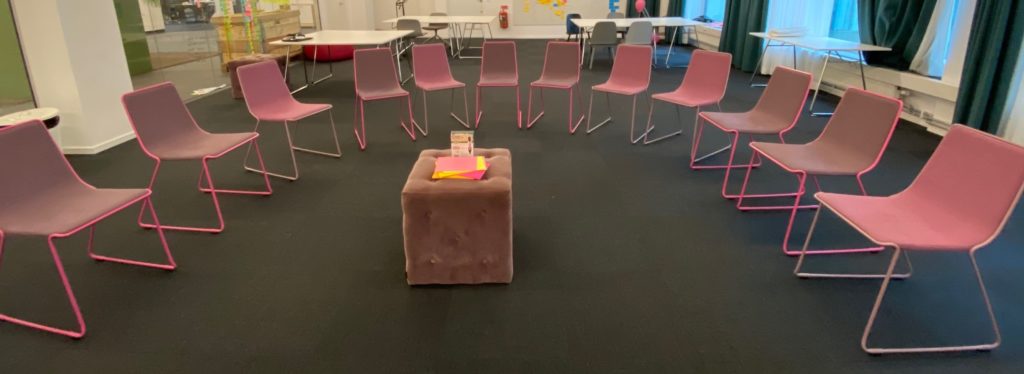
There’s a wide variety of tools available to make your distributed meetings more effective. For collaborative meetings a good start is an electronic whiteboard collaboration solution that’s accessible to your whole team. Some examples include Google Jam Board, Miro and Mural. Meeting prep time will increase, but you can use tools like Mural to set up a structure for the meeting. If some of your team are collocated, make sure to have everybody access the meeting individually using their own computers.
If you don’t have access to a collaborative whiteboard, you can always ask participants to use pen and paper at their location and share pictures of the results. Or you can use wikis such as Confluence to share information.
My colleagues and I have written a short guide for facilitating remote meetings that you can download.
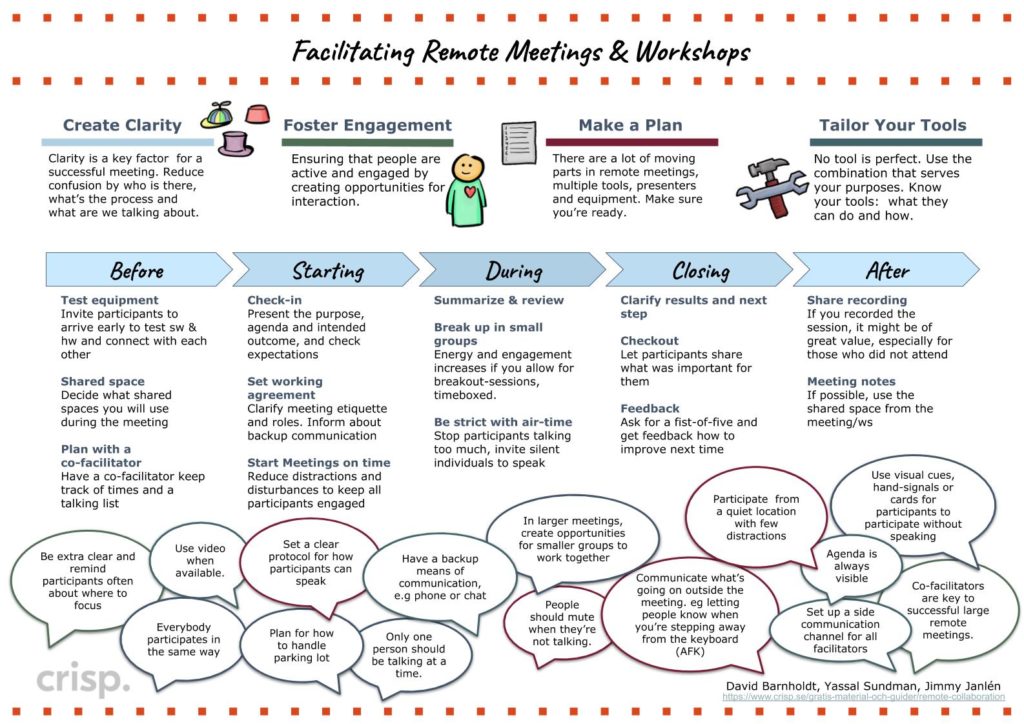
And Jimmy Janlén has a compilation of tips and tricks for working and meeting remotely.
Get in touch via my homepage if you have any questions or comments!




I like the way your explanation. Mainly, “Example agendas for a team startup” this section is amazing. I would love to read all your blogs in my free time. It is very helpful.